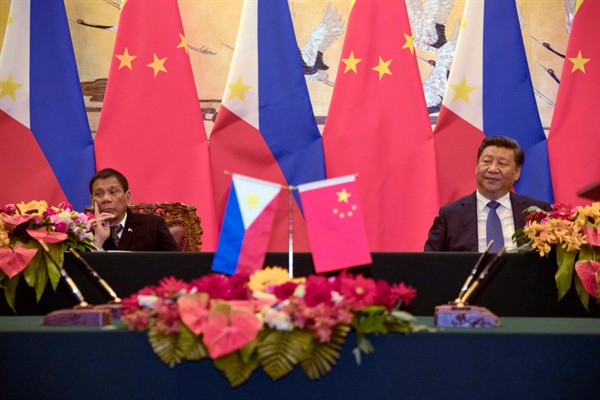Philippine Foreign Minister Teodoro Locsin Jr. was peeved at Beijing. It was early May, and hundreds of Chinese vessels had been regularly intruding into the Philippines’ exclusive economic zone in the South China Sea, where the Chinese government has made expansive maritime territorial claims. After lodging numerous complaints through formal diplomatic channels to no avail, Locsin took to Twitter and unleashed an expletive-filled tirade. “China, my friend, how politely can I put it?” he wrote. “Let me see… O…GET THE [F**K] OUT.” (Locsin didn’t bother with the asterisks.)
It was not only Philippine officials and diplomats who were angry at Beijing’s willingness to raise tensions in disputed waters. In a poll conducted by the ISEAS-Yusof Ishak Institute in Singapore earlier this year, before the latest Chinese incursions into Philippine waters, roughly 87 percent of Filipino respondents said that they considered China’s encroachments into other countries’ exclusive economic zones and continental shelves to be the “top concern” in the South China Sea. The same proportion, 87 percent, said that if forced to align with either the United States or China, they would choose the U.S.—the highest share of any country in Southeast Asia.
But even as Filipinos of all stripes vent their anger at Beijing, they should be equally furious with their own leader. His policy toward China has failed to either protect the Philippines’ national security or to boost its economy.

